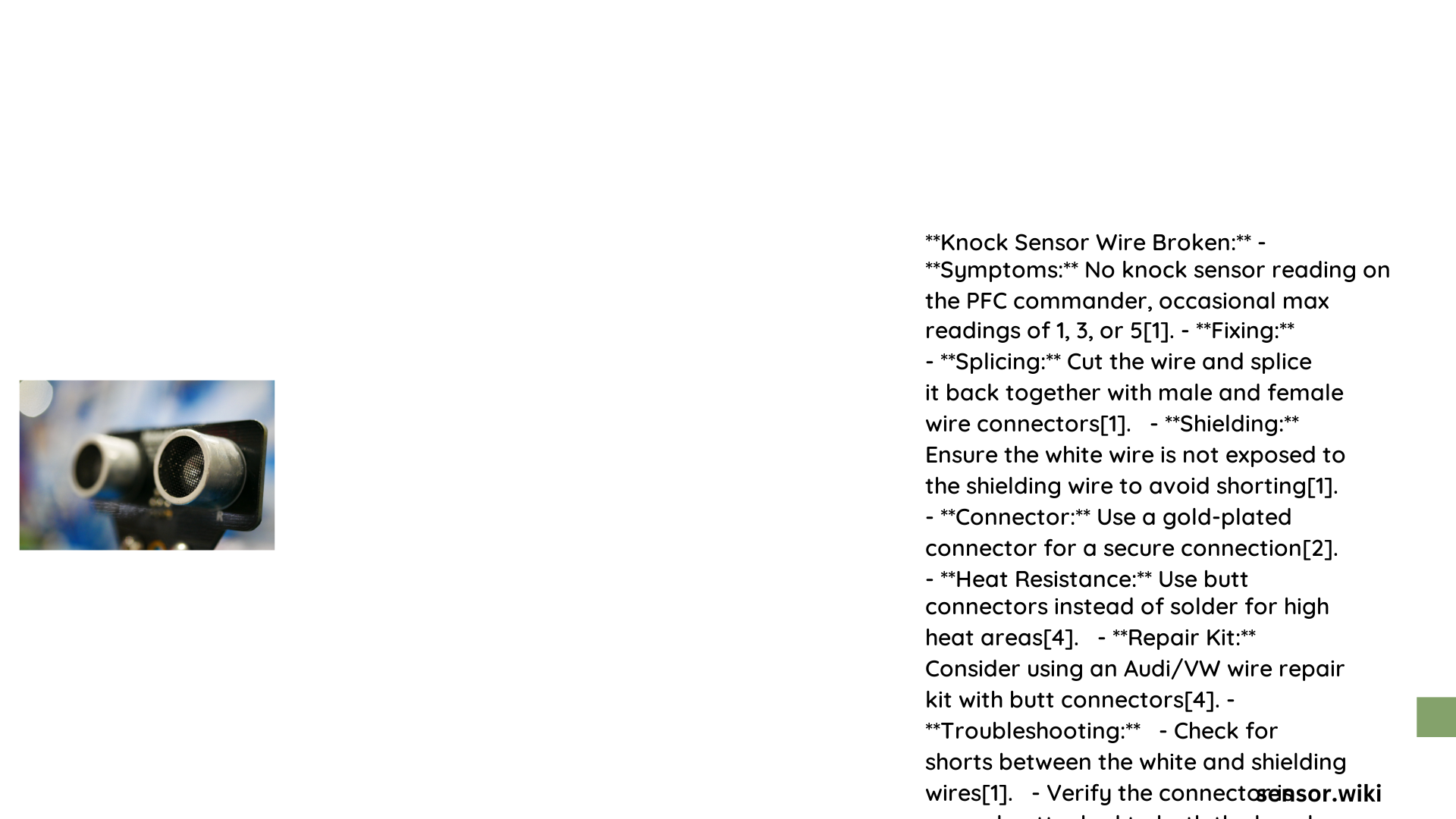A broken knock sensor wire can cause significant engine performance issues, potentially leading to reduced power, increased fuel consumption, and potential long-term engine damage. When the electrical connection between the knock sensor and the vehicle’s computer becomes compromised, it triggers a cascade of diagnostic trouble codes and performance problems that require immediate attention and precise diagnostic techniques.
What Causes Knock Sensor Wire Failure?
Mechanical Stress Factors
- Constant engine vibration
- Heat exposure
- Aging wire insulation
- Rodent damage
- Corrosion at connection points
Electrical Stress Factors
- High voltage fluctuations
- Moisture intrusion
- Poor initial wire installation
- Manufacturing defects
How to Detect a Broken Knock Sensor Wire?

Diagnostic Symptoms
- Check Engine Light Activation
- Persistent illumination
-
Intermittent warning signals
-
Performance Indicators
- Reduced engine power
- Irregular acceleration
- Unexpected fuel consumption increases
Diagnostic Trouble Codes
| Code | Description | Potential Cause |
|---|---|---|
| P0325 | Knock Sensor Circuit Failure | Wire damage |
| P0332 | Knock Sensor Circuit Low Input | Electrical short |
| P0326 | Knock Sensor Signal Erratic | Intermittent connection |
What Tools Do You Need for Repair?
Essential Equipment
- Digital multimeter
- Wire strippers
- Soldering iron
- Heat shrink tubing
- Electrical tape
- Replacement wire (18-20 AWG)
How to Test Knock Sensor Wire?
Resistance Measurement
- Disconnect battery
- Locate knock sensor connector
- Measure resistance between pins
- Normal range: 93-104 KΩ
- Check voltage readings
- Key-on voltage: Approximately 30 mV
Step-by-Step Repair Process
Detailed Replacement Procedure
- Preparation
- Disconnect vehicle battery
- Locate knock sensor
-
Remove any obstructing components
-
Wire Inspection
- Visually examine wire
- Check for physical damage
-
Test continuity
-
Wire Replacement
- Cut damaged section
- Splice new wire segment
- Use proper soldering technique
- Insulate connection
Cost Considerations
Repair Expenses
- Parts: $20-$50
- Labor: $100-$300
- Total Potential Cost: $120-$350
Prevention Strategies
Maintenance Tips
- Regular wire harness inspection
- Protect wiring from heat sources
- Use protective wire looms
- Avoid high-pressure engine washing
When to Seek Professional Help?
Expert Intervention Required
- Complex wiring issues
- Multiple diagnostic codes
- Limited technical expertise
- Advanced engine configurations
Potential Consequences of Ignored Repair
Long-Term Risks
- Catalytic converter damage
- Reduced engine efficiency
- Potential engine misfires
- Increased emissions
Final Diagnostic Recommendations
Quick Checklist
- Verify diagnostic codes
- Perform resistance tests
- Inspect physical wire condition
- Consider professional diagnosis if uncertain
Technical Specifications
Wire Characteristics
- Typical Gauge: 18-20 AWG
- Insulation Type: High-temperature resistant
- Voltage Rating: 600V
- Temperature Range: -40°F to 221°F
Conclusion
A broken knock sensor wire demands prompt and precise intervention. Understanding diagnostic techniques, repair processes, and potential consequences helps vehicle owners make informed maintenance decisions.
